Japanese Lucky Food: 8 Delicious (and Auspicious!) Dishes
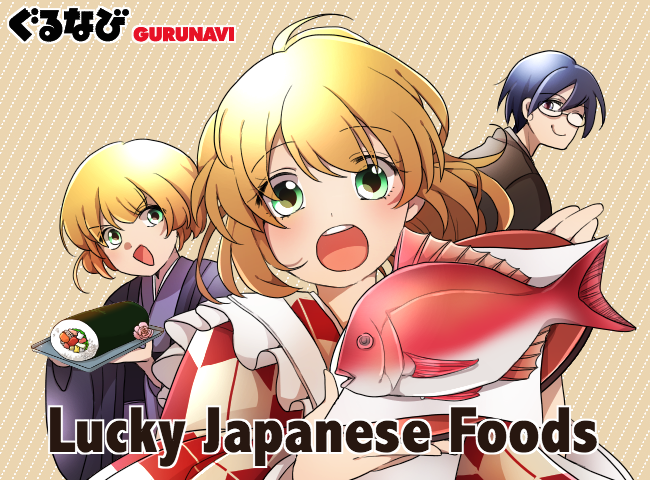
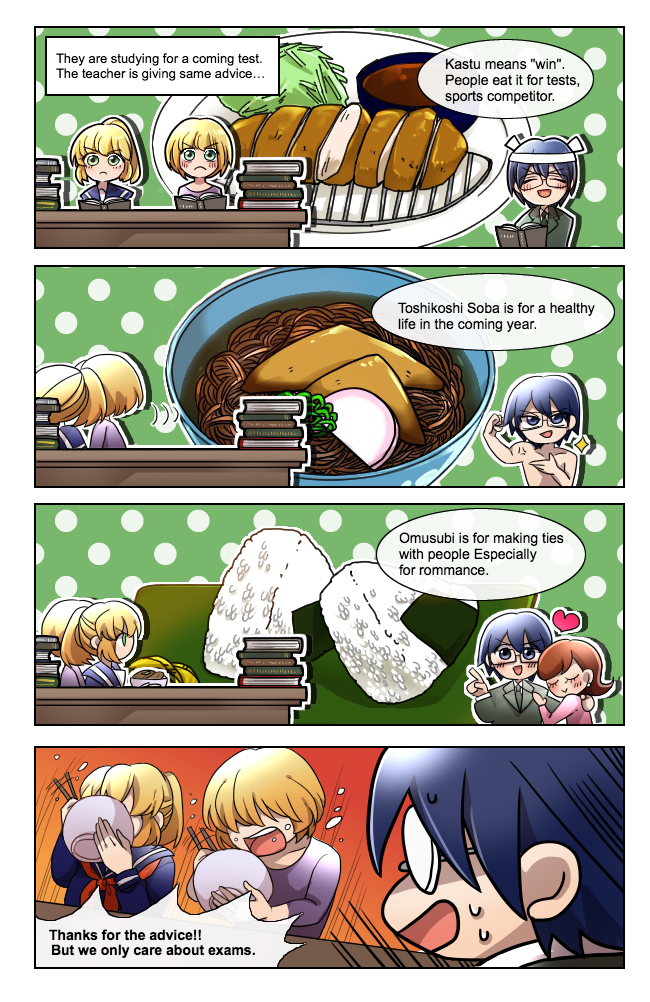
Cultures throughout the world have regarded the consuming of certain foods as bringing good luck, health and wealth in the future. The reasons for the associated luck-bringing are many—folklore, homonymous properties of their name, aesthetic symbolism and history. In Spain, a grape for each stroke of midnight—representing the months of the calendar year ahead--are eaten on New Year’s Eve. In Turkey, eating pomegranates is considered good luck because their red color symbolizes the human heart--and therefore life, with the plentiful seeds representing prosperity.
Japan also has its own unique set of “lucky” foods, some of these are tied to particular cultural celebrations or events, others are just every-day luck-bringers—read on to discover some of the most delicious—and auspicious—lucky food finds in Japan!
8 Japanese Lucky Food Finds for all Occasions
Katsu

Katsu is popular Japanese dish of meat—most often pork or chicken—that has been pounded thin, dipped in flour, egg and panko crumbs, then deep-fried until crispy and golden. Katsu’s lucky food status comes from it’s name, a homonym for the japanese verb meaning “to win.” For this reason, it’s often eaten by competitors before sports matches and by students before an exam. This Japanese lucky food dish is typically enjoyed with a rich, sweet and savory Worcestershire-like sauce, a pile of finely shaved cabbage, and steamed rice. Katsu may also be eaten as part of set meal (katsu teishoku), alongside Japanese curry (katsu-curry), on top of a rice bowl (katsudon), or in a bento box.
Toshi Koshi Soba
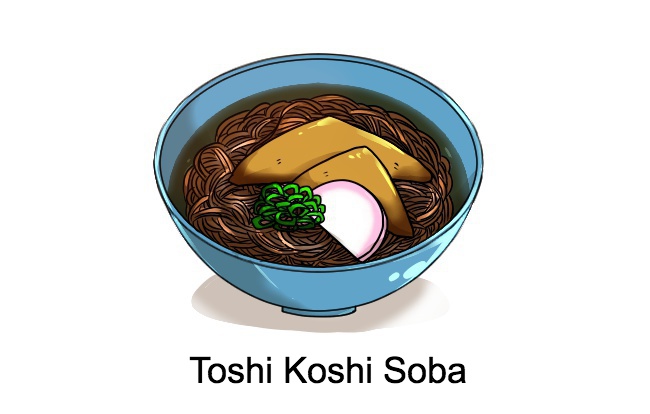
At homes, restaurants, shrines, convenience stores and other public locations around Japan on New Year’s Eve, you often find soba noodles being served. Known as toshi koshi soba—literally meaning “year-crossing noodles” —these are soba noodles eaten on New Year’s eve to bring good luck for the coming year, a custom that dates back hundreds of years. Although the exact origins are unknown, there are several theories relating to various symbolistic principles--the length of the noodles is thought to represent a long length of life; the hardiness of the buckwheat plant is thought to signify resilience; the softness of soba noodles makes them easy to cut, symbolizing severing bad luck of the past—it’s one lucky food that packs quite a punch! Toshi koshi soba can come served in a hot dashi broth, or cold with tsuyu soy-based dipping sauce. Toppings such as finely sliced scallions, shredded nori seaweed, a slice of kamaboko fishcake or a raw egg can be added. Enjoy a bowl of toshi koshi soba while wishing others “akemashite omedetto gozaimasu”--best wishes for the new year.
Tai

With a shapely form, glistening red scales and delicate white flesh and exquisite taste, it’s hardly surprising that Tai as long been considered the "king of fish" in Japan, and a symbol of good tidings. An extremely popular food for good luck, tai is eaten in Japan at weddings, birthdays, at New Year and other celebratory occasions--it’s not an uncommon sight to see a victorious politician or sumo wrestler wielding a tai in newspaper coverage! This good luck status was granted by both the fish’s red color-considered an auspicious color in Japan, and the fish’s name, which is similar in sound to the final syllable as the word for "happy" or "auspicious"—omedetai. On festive occasions, it is customary to boil and serve tai whole—”okashira-tsuki” —preserving its perfect form. Aside from this dish, tai is commonly eaten as tai-meshi, where it’s steamed and served mixed through rice, simmered nitsuke-style, or sliced raw as sashimi, or as a donburi and or sushi neta (topping).
Fuku Mame

In February each year is the important Japanese cultural event of Setsubun. Literally meaning the “seasonal divide,” it marks the transition from winter to spring according to the ancient Japanese calendar. It is marked by a series of unique customs, each believed to bring good fortune and ward off ill spirits. One of these customs is the practice of mamemaki, throwing lucky beans called fuku-mame inside and outside the house whilst chanting, “Oni wa soto! Fuku wa uchi!”—“Demons out! Luck in!”. Alternatively, the beans are thrown at someone dressed as an oni (demon). Fuku is a homonym for luck in Japanese, and mame for healthy and well. Another fuku-mame-related custom for Setsubun is eating beans equivalent to one’s age, plus one - the extra bean is to signify the year to come.
Ehomaki
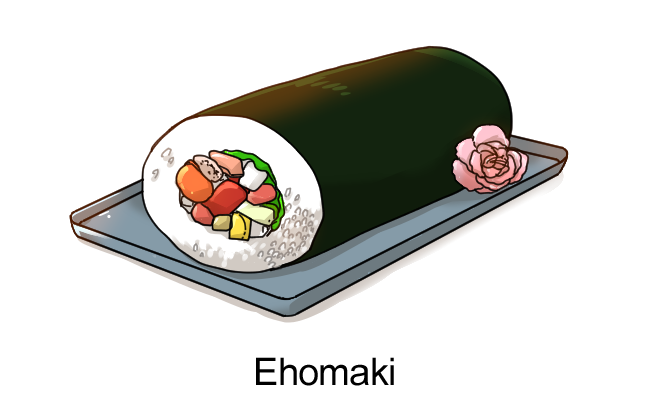
Aside from throwing lucky beans, there are other customs for Setsubun. One of these is hanging a sardine head fastened to a holly branch over the doorway to ward off evil, and another is eating ehomaki. Ehomaki translates as “lucky direction roll,” a reference to the way it is consumed—standing, facing the auspicious direction of the year. But the guidelines don’t stop there—the ehomaki must be eaten whole (uncut), as cutting would be to sever the luck. Curiously, ehomaki’s lucky food status depends specifically on how it is eaten. The roll must be eaten in its entirety in one sitting, with not a single rice grain left behind so that not a single bit of luck is lost. The roll is also filled with seven different ingredients, a traditionally auspicious number.
Osechi
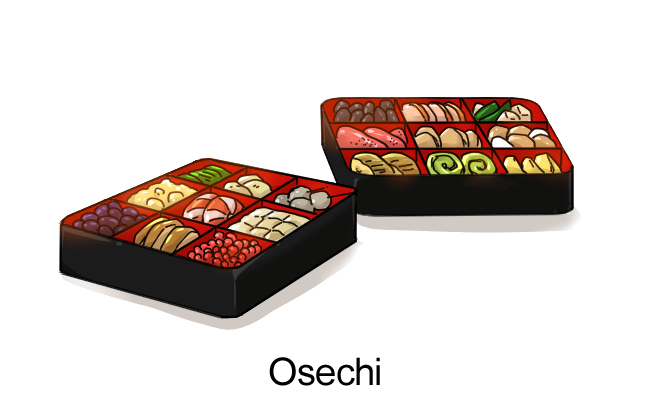
The trademark of osechi ryori, an integral part of Japanese new year celebrations, are tiered wooden or lacquer boxes—jubako—brimming with a collection of foods that bring good luck. This collection of lucky foods is known as “osechi ryori”, ryori meaning food, and osechi taken from sechi-nichi, the word for a day representing the change of seasons. Each food is imbued with symbolism for good luck for the year to come relating to health, longevity, wealth, happiness, and harvest. Some examples include prawns, as the bent shape of the crustacean’s back is likened to that of an old person, indicating long life; kuri kinton (mashed chestnuts), as its golden color symbolizes financial prosperity; and kazunoko, as herring roe contains so many eggs, so is eaten by those wishing for offspring in the year to come. Osechi is eaten in the first three days of January, and was traditionally prepared ahead of housewives so that no work needs to be done during New Year’s. These days, osechi ryori sets are often purchased, given the lengthy and involved process of preparing them.
Onigiri/ Omusubi
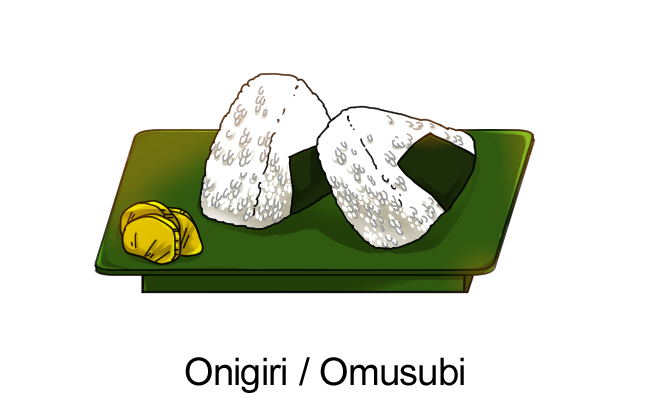
Onigiri (also known as omusubi) is another Japanese lucky food that gets its auspiciousness from its form. Onigiri are often referred to as “Japanese rice balls,” but they are typically shaped like a triangle, similar to the shape of mountain. Traditionally, mountains in Japan are considered sacred by farmers. To win the favor of the gods, rice was pressed into the shape of mountains, and thus is considered a good luck food.
Neba-neba

The term neba-neba refers to a group of good luck food that have a characteristic sticky, slimy texture or appearance that takes some getting used to—but you’ll be glad you did! Some common examples are raw egg, nameko mushrooms, natto, mozuku seaweed, tororo (grated yamaimo, mountain yam) and okra. When eating these foods, you can see them stuck together in a web, and lifting them with chopsticks leaves a trail. Neba neba foods are regarded as very healthy, but their status as lucky food comes from their stickiness, which signifies the tenacity of someone who wants to try their absolute best at something.
Good Luck Food in Japan is Part of a Great Tradition
Whether or not you believe certain foods will make you a millionaire or bring you happiness and long life, the range of lucky Japanese foods offer the opportunity to learn about and partake in important parts of Japanese culture—not to mention the chance to eat delicious meals! If you’re in Japan during Setsubun in February, try ehomaki; during New Year’s, try osechi ryori or toshi koshi soba; and at any other time, sample the range of Japanese lucky food out there. You won’t regret it, and who knows—you may even be rewarded!








